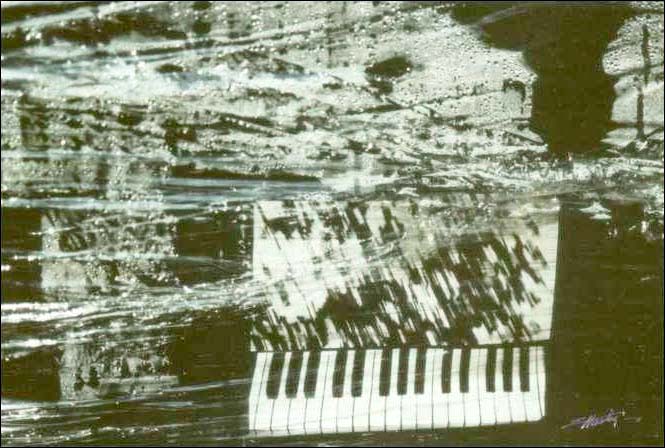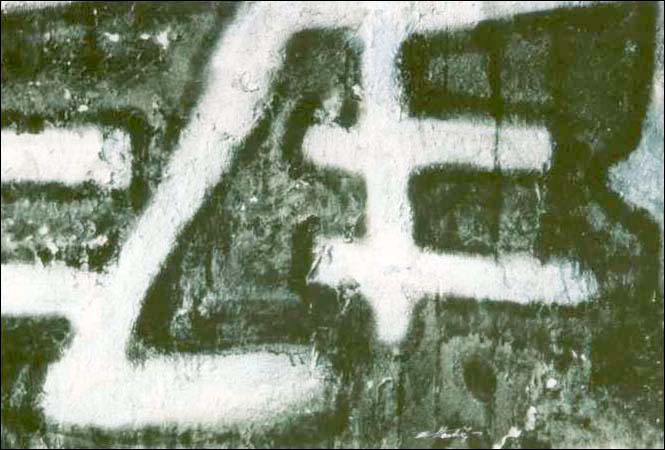
23 IV - 18 V '96

On Edward Hartwig
Following an extraordinary phenomenon of Edward Hartwig's career which has been going on for seventy years now critics usually stress the artist's universality, a significant place that he occupies in the history of Polish photography and a deep influence he has been for a few generations of photographers. The critics usually agree that Hartwig's work cannot be classified within a concrete current or tendency because it is a product of different esthetic and stylistic periods which the artist has been connected with and which are so distant from one another - not only in time - as Misonne's romantic impressionism of the 20s and abstract and conceptual tendencies of the 60s and seventies.
When we go deeper, back to the foundations and sources of inspiration of his work, we have to consider his early interest in painting that made him take up studies in a private art school in Lublin. He was fascinated by the life of the bohemian circles of Lublin and Kazimierz. Social encounters, discussions on art, plein-air field trips, his first attempts at painting - they all shaped Hartwig's imagination, the world of esthetic values and opinions about art.
The profession of a portrait photographer which he inherited from his father was treated pragmatically by Hartwig who believed that he should rather stick to art as far as his career was concerned and make photography primarily a convenient tool, like a paintbrush, pencil or crayon. And although he never became a painter he was fascinated by traditional subjects of fine arts like nature, earth and landscapes as a photographer.
He achieved fame by the end of the nineteen twenties as a "photographer of mists" and a photographer-impressionist and in I935 he went to study at the Institute of Graphics in Vienna. The time he spent in Vienna was a milestone in his artistic biography because it finally shaped his artistic attitude and views.
In Vienna he had access to the latest photographic equipment and materials, modern technology, new tendencies and fresh artistic inspiration from the other side of the ocean brought to the Institute by professor Rudolf Kopitz from the United States. It all changed Hartwig's attitude towards his own photographic workshop, broadened the range of subject of his works and made him use new technique and new forms.
Kopitz's school proclaimed the association of photography and graphic art which was a discovery for the young Hartwig. At that time he creates his first works in which photography is transformed by different means into a more graphic form and where the image is composed basically from pure black and white colours. The negative often becomes for Hartwig the starting point of creating a picture subordinated to his own artistic vision. From now on his workshop included experiments in the darkroom: over-exposure, double exposure, manipulations with the optics and light, the employment of mirrors. And although after he returned to Poland, to Lublin, he had had to comply with his clients' wishes and the dominating trends and fashions, the time spent in Austria would bear fruit later, after the war, finding a mature expression in Hartwig's authorial albums of the sixties and the seventies - "Photography", "My earth" and "Photographic Variations".
His fascination with the possibilities new techniques offered meant that Hartwig came close to the latest avant-garde propositions and made his work related to the current tendencies in art which always was an imperative for him, an internal need. He always accompanied the changes and transformations of modern art, which can be seen in his photography. He feels best when he searches and experiments.


Years went by but Hartwig's creative temperament did not become less fiery and vivacious. Although his age and personal situation limited his activities somewhat, because he could not undertake longer plein-air trips in order to return to his beloved landscapes - it did not block his creative work. On the contrary - it only turned his attention to the environment close around him, the little elements of the city landscape. It seems that his sensitivity even sharpened - sensitivity to the visual beauty of a passing detail and to accidental and extraordinary configurations of banal objects that often formed images artistically interesting, intriguing in their mysteriousness and ambiguity.
A few years ago Hartwig, as he himself says, went through a phase of a specific "colour madness". That is when he created series of colourful, nearly abstract compositions, representations of city landscape details which he greatly enlarged. They were presented in the Warsaw Kodak gallery in the district of Wola.
"The madness has passed, I am calm now" - he says. After the fascination by colour there came a time for balanced, refined and almost monochromatic pictures which the old master finds in the most ordinary and often completely uninteresting places. He builds his compositions from details, fragments of walls, spots on fences, an accidental coil of wires or a pile of "stuff" covered with transparent foil. That is why - this time without any manipulations in the darkroom - intriguing, intimate and artistically beautiful photographs which come close to abstraction and surrealism although they truthfully represent a part of reality on film frame.
"Photography, like other kinds of art, creates its own world of forms and feelings" - reads Hartwig's artistic credo in the "Contemporary Photographers" encyclopedia. And he goes on: "Experience has taught me that like plastic arts photography brings us closer to universal truth, but it never reveals it to us completely".
The latest series of pictures by Edward Hartwig which are related to some of his earlier works presented at such exhibitions as "Protected Area" or "Currently..." show an ideological and formal relation with the work of such authors (who are also just about his age) as Americans Wynn Bullock and Aaron Siskind, Antoon Dries, a Belgian, or a somewhat younger Czech, Vilem Reichmann. All of them use common, ordinary elements like parts of walls, colourful planes, the texture of wood or stone or the surface of a puddle. They show them with simplicity but give them new meaning and new dimensions by isolating details out of their usual contexts. A Danish photographer, Keld Helmar-Petersen, whose attitude is strikingly similar to the intentions of the Polish master, commented on the nature and aims of photography conceived in such a manner. He said that he was inspired by the look of objects on which a man had left his trace, by their extraordinariness, their visual suggestiveness, specific magic, and by how these objects presented in photographs become works of art. He wanted to give his works a similar power to that which characterizes the works of artists he admires - composers, sculptors, architects and painters. He would like to contain in his pictures more than what meets the eye searching for visual satisfaction; his works should simultaneously appeal to the viewers imagination and provoke him in a specific way.*
Barbara Kosińska
Translated by Maciej ¦wierkocki
* "Contemporary Photographers", London / New York 1994
Copyright ©1998 Edward Hartwig, Barbara Kosińska, Galeria FF £DK